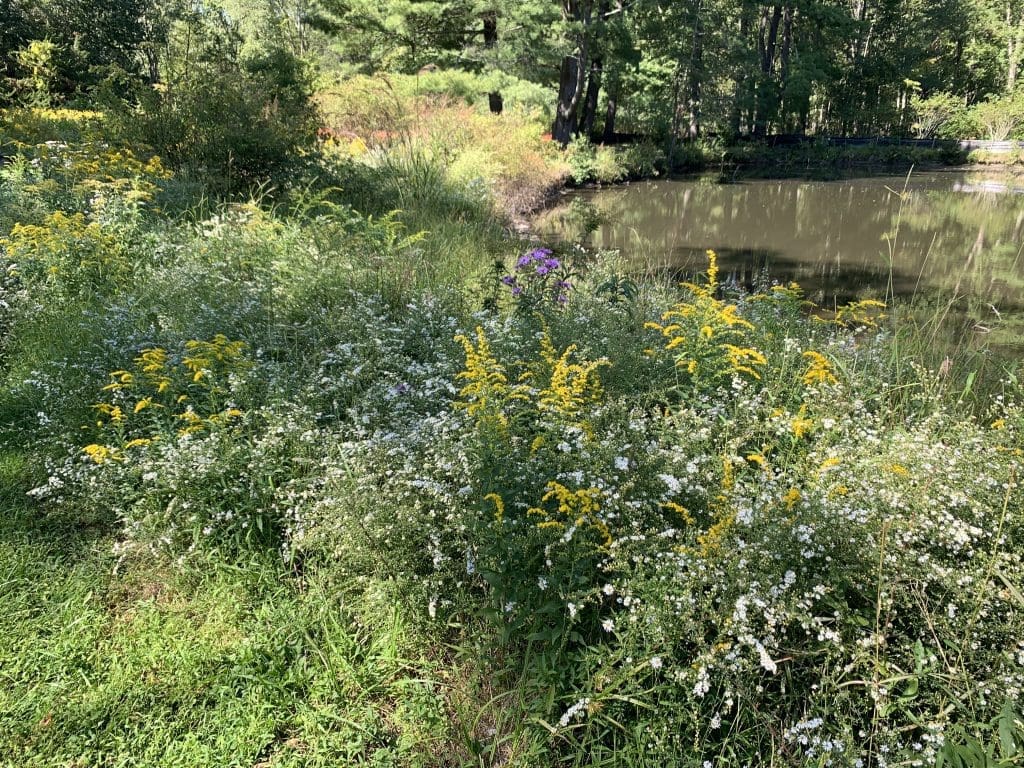This long-awaited pond and wetland restoration project was finally completed last week, after years of permitting and fluctuating site conditions. The scope of work involved constructing a concrete dam at the outflow of the pond, to maintain the pond’s water level, thereby upholding a functioning pond ecosystem.
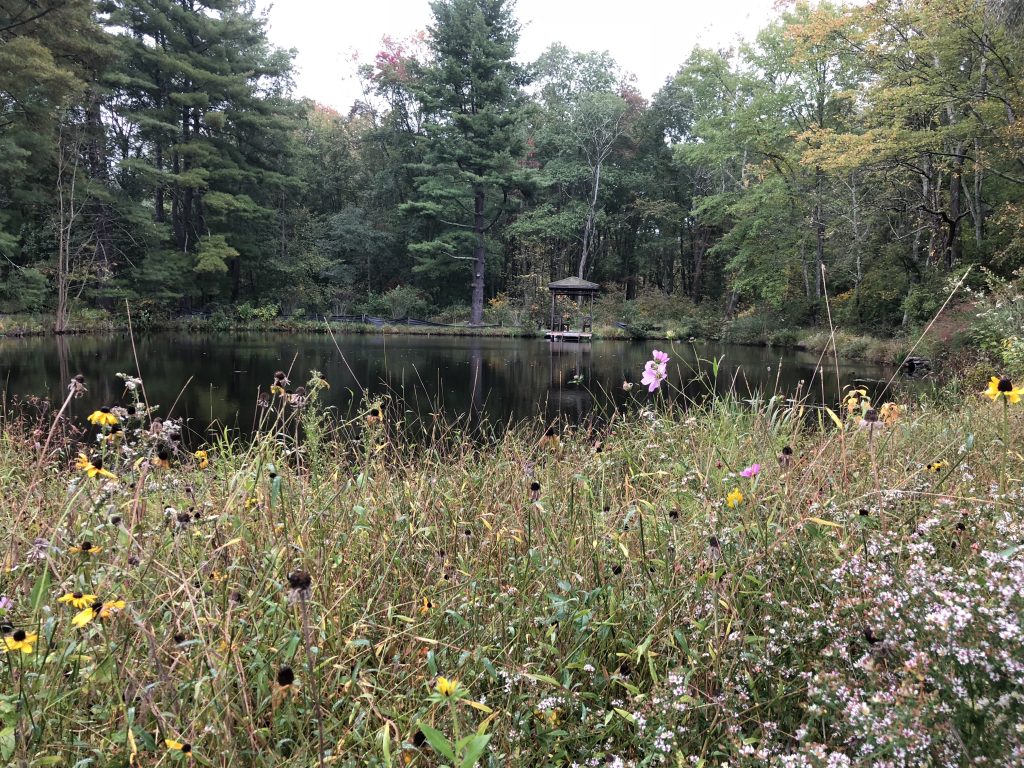
Landscape Site Conditions
No doubt, this is a rare and special property, spanning a range of ecosystems.

In the rear of the property, a mature forested wetland borders a wet meadow and freshwater pond, surround by a riparian buffer; and closer to the home, upland habitat both forest and fields.

This landscape is diverse and mature, an exhilarating example of the potential for carbon sequestration, habitat creation, and stormwater and soil conservation on every property.
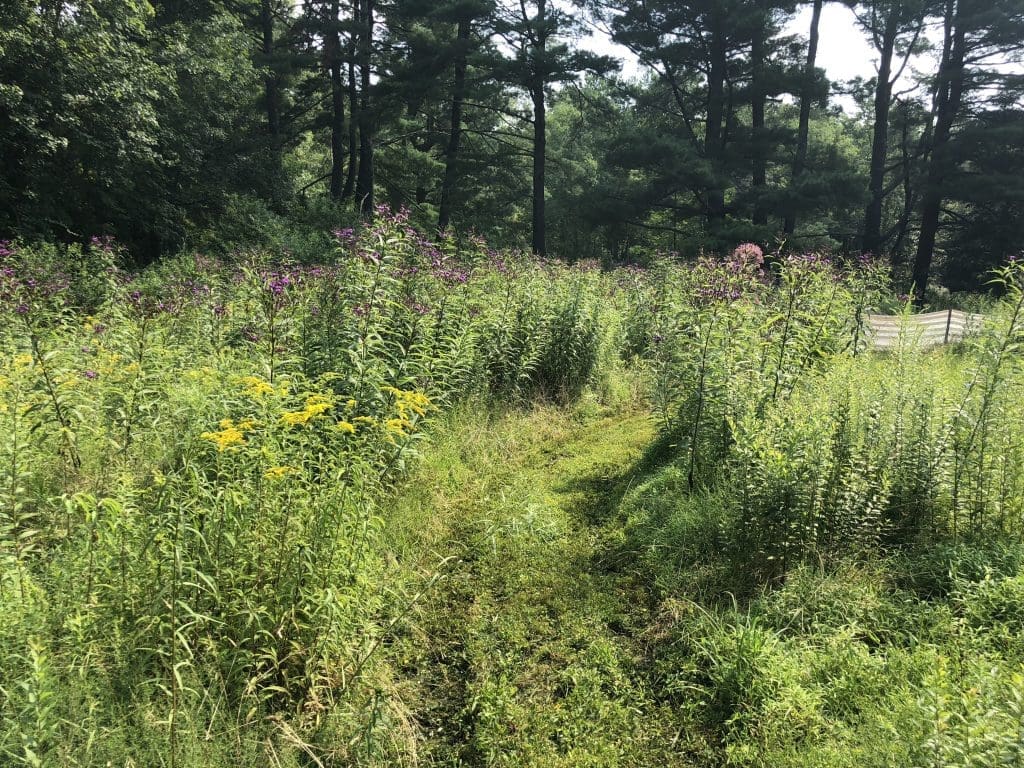
It represents both a naturalistic landscape design and strategic ecological management of existing ecosystems (forest, meadow) to optimize the ecological potential and productiveness.
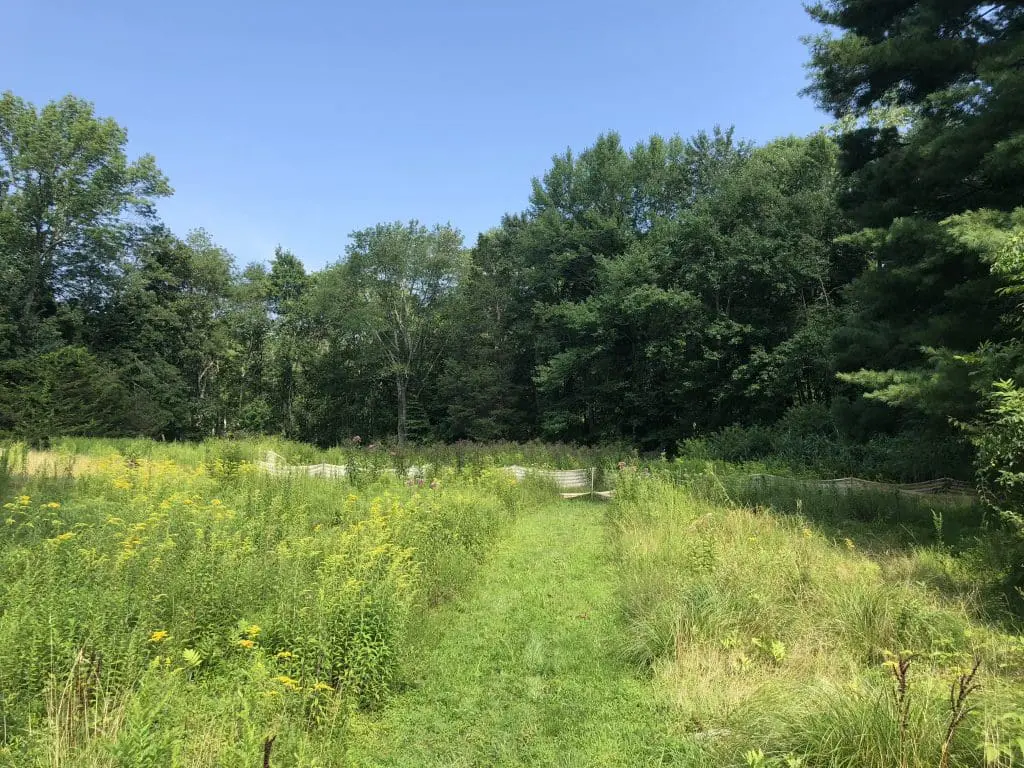
Pond Site Conditions & History
The one-acre pond in South Salem, NY is fed by Truesdale Lake via the Waccabuc River. The pond can experience extreme vacillations in water level, especially in the fall when the lake association performs a draw down, sending a surge of water downstream. Previously, there had been a temporary wooden dam in the same spot that eventually succumbed to the water pressure.
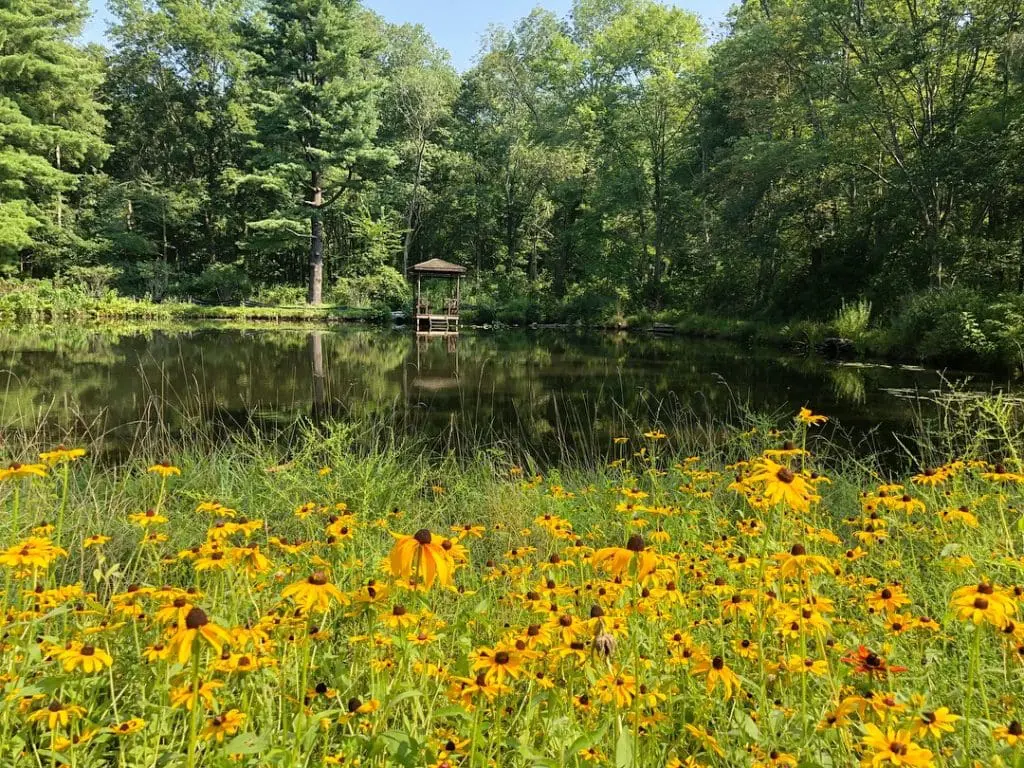
In the summer months especially during a drought, the pond water level can drop significantly, bordering on a swamp / bog environment. Swamps, although valuable in terms of flood mitigation, run the risk of becoming mosquito-breeding grounds and are less desirable residential landscape features.

Mosquito habitats bear the added public health risk of spreading diseases such as West Nile. We can design and manage landscapes to naturally discourage mosquito habitat, without using toxic chemicals. Learn more on our previous blog, Landscape Design for Natural Mosquito Control.

Healthy, freshwater pond ecosystems such as this one naturally reduce mosquito potential by providing food, habitat and healthy competition among precious species.
Permitting & Engineering
To make things more complicated, this wetland system is part of the watershed that feeds New York City, entering another tier of environmental protections and additional permits required. The entire project was permitted and monitored by the New York Department of Environmental Conservation.
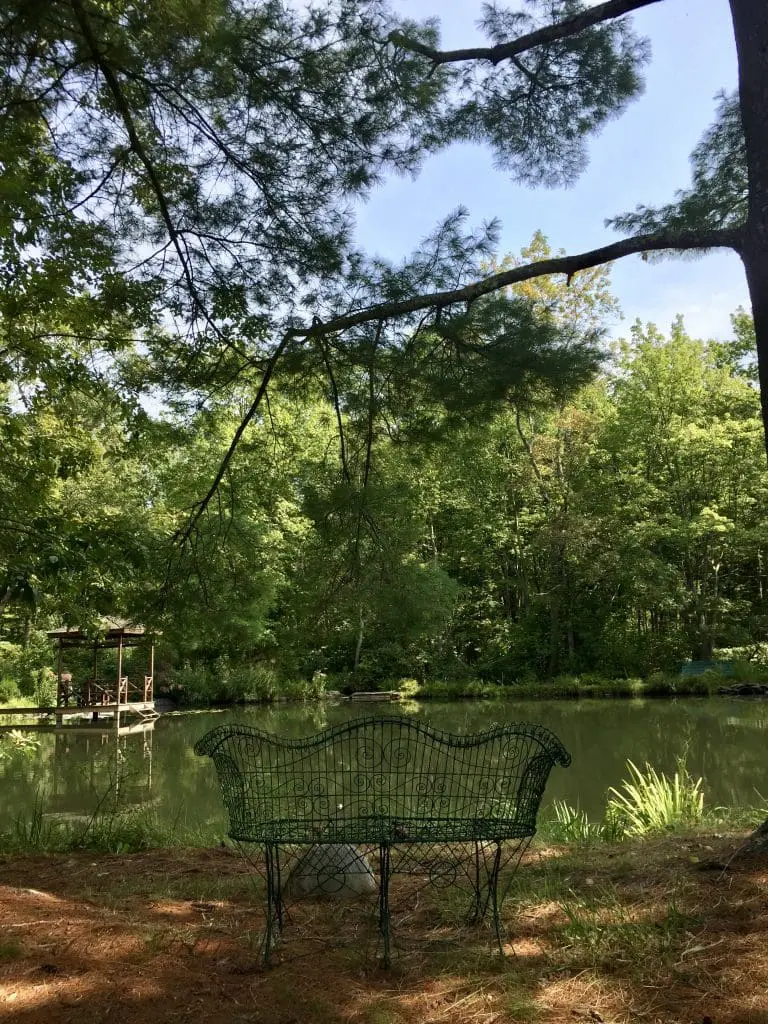
We partnered with JMC, an engineering, planning and landscape architecture firm, who developed the engineering and construction plans for the dam, as well as detailed site protection instructions. JMC also conducted site inspections throughout the project. Special thanks to David Lombardi for being a great communicator and a pleasure to work with!
Designing Riparian Borders for Water Quality
The client wanted to preserve the pond environment, and to do so, we needed to maintain a consistent water level to support the aquatic plants and organisms.

The pond perimeter was seeded with the Riparian Buffer Mix, Obligate Wetland Mix, and the Showy Northeast Wildflower & Grass Mix, all from Ernst Seed, to create a native vegetative border between the upper lawn and the pond area. This border effectively prevents nutrient-loading in the pond by intercepting stormwater runoff from the lawn. GJL also seeded winter rye for quick germination and soil stabilization while the other wildflowers and grasses filled in.
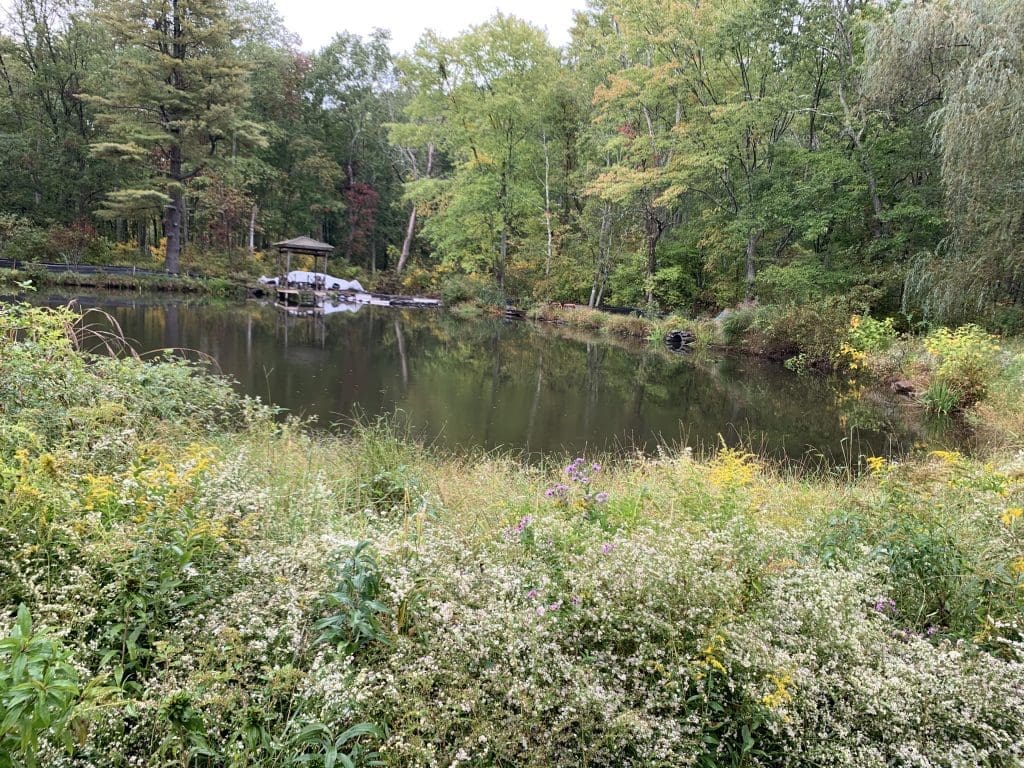
Native plants, especially wetland plants, naturally uptake and bio-filter water of pollutants. Of course, they also provide habitat for our native pollinators and birds; of extra importance for this property, given the surrounding forest and high bird activity.
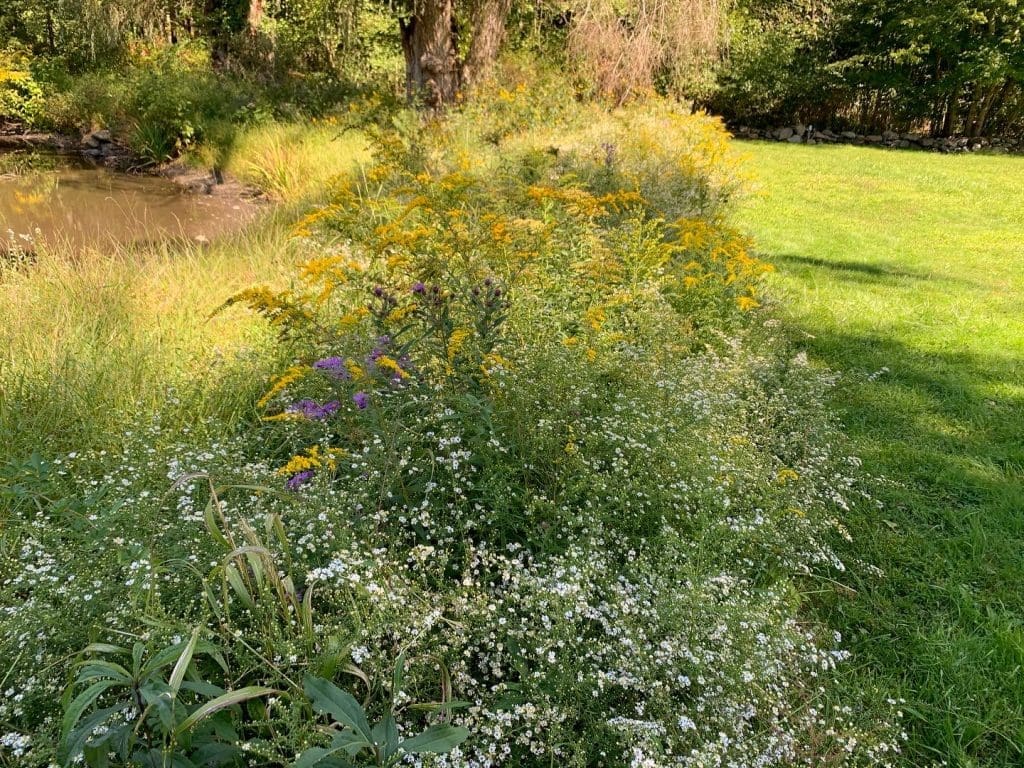
The designed vegetative border provides essential fringe and transition habitats for wildlife. Adjacent to the pond is a managed wet meadow, which also attracts a plethora of pollinators and birds. Learn more about this Organic Meadow Management on our previous blog post.
The carbon sequestration power of the wet meadow/riparian border and the mature forest is inspiring and a model of ecological land use.

Site Protection in a Wetland Environment
GJL followed strict site protection protocols, as defined in our DEC permit. We installed a construction road to transport materials and constructed a temporary silt-fence to prevent sediment from washing into the pond (preserving water quality).

To divert the water from the future dam area, we installed a coffer dam made of sandbags and pond liner and staged a “de-watering area.”
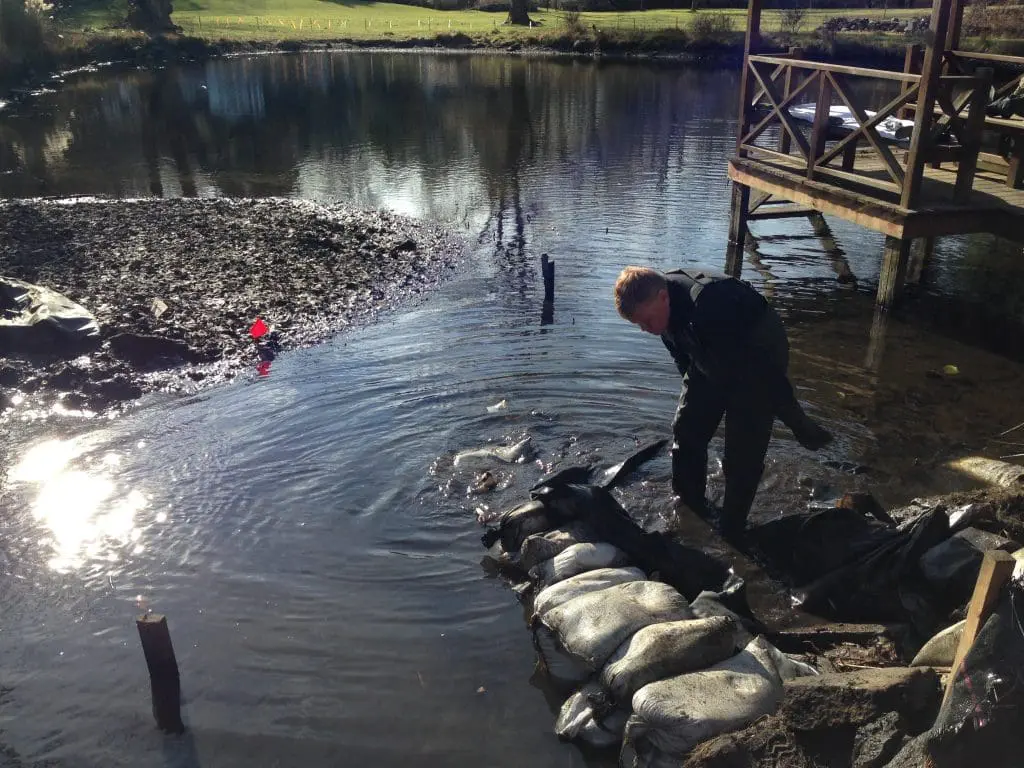
GJL also installed a culvert pipe to allow water to overflow into the rear forested wetland during times of high-water volume.
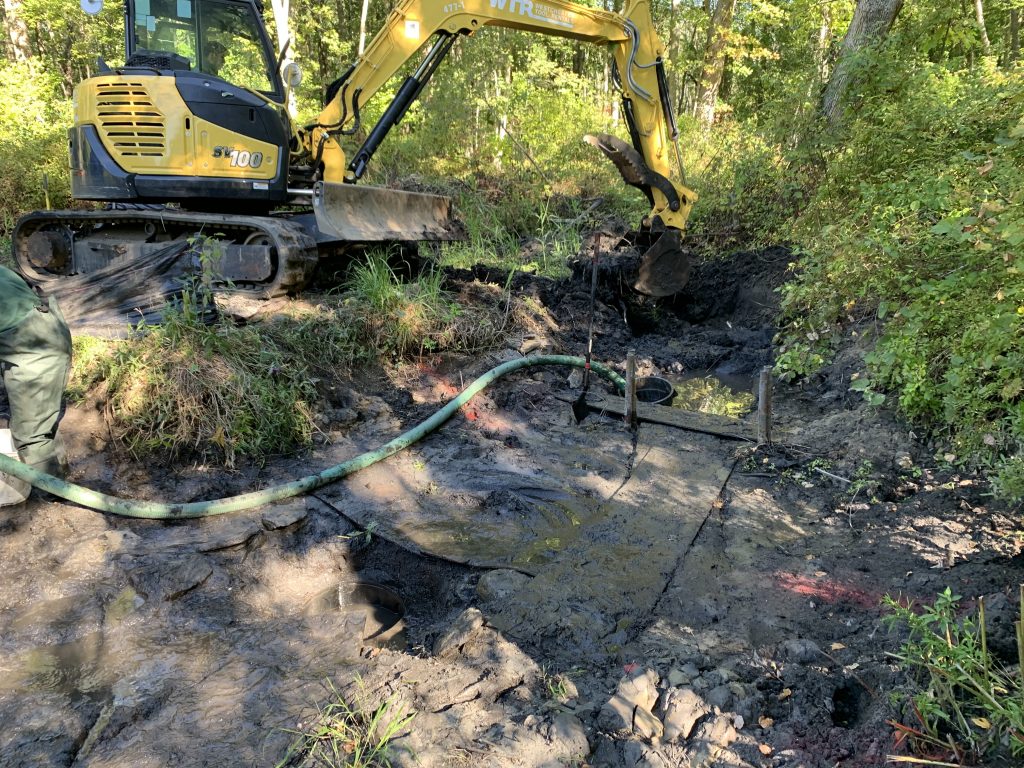
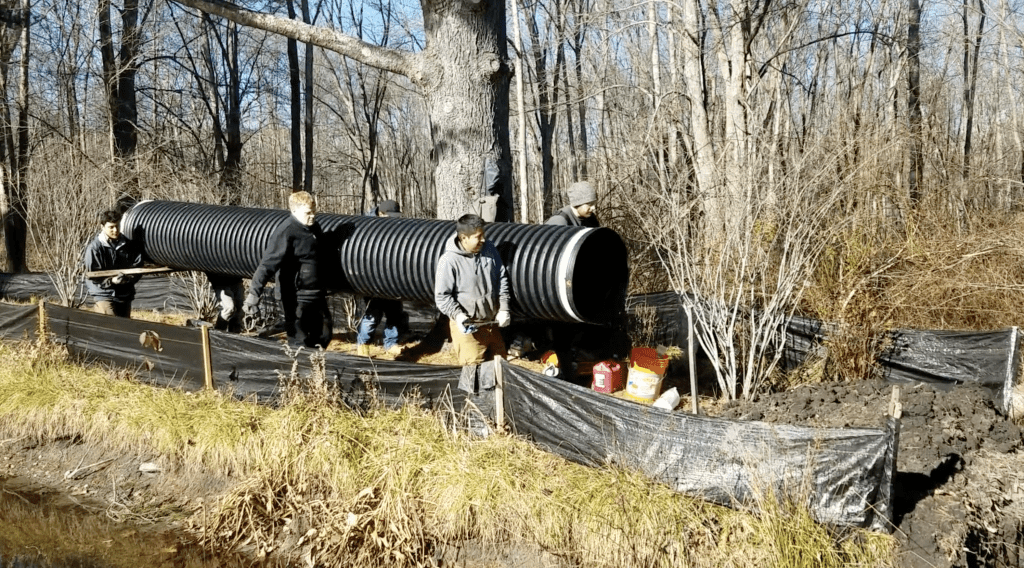
Residential Concrete Dam Construction
We faced a number of delays because of the ever-fluctuating water level, but at last we were able to divert the water and begin dam construction.
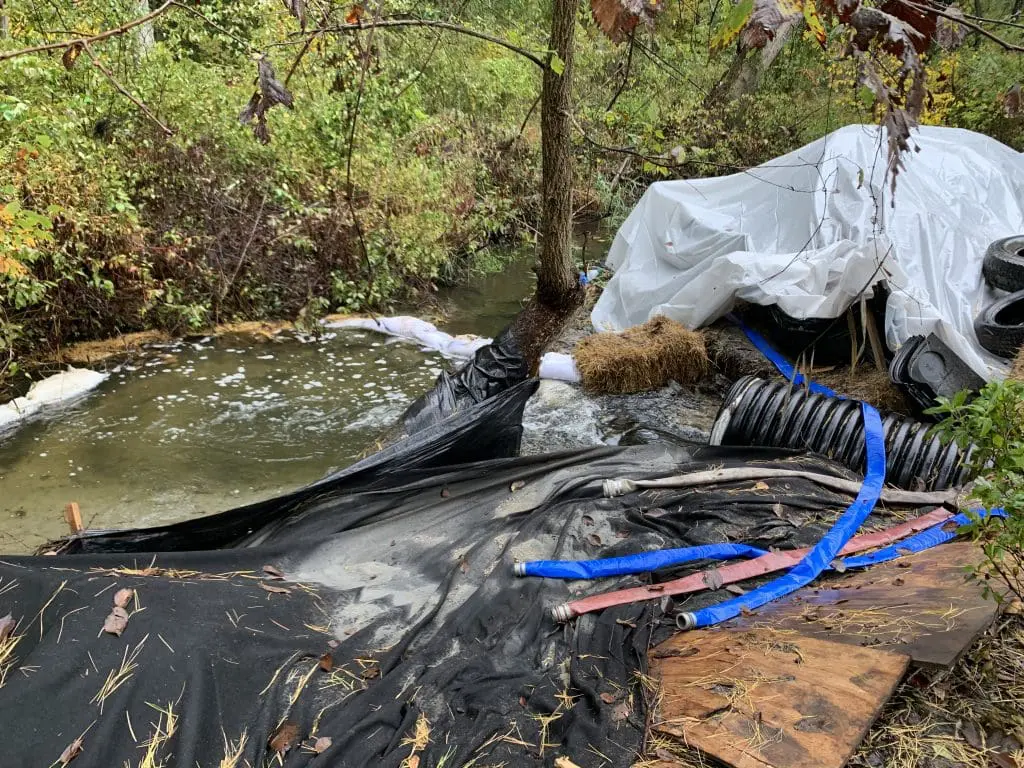
Jose and his team from J-R-One Contracting framed the dam, poured the concrete, and finished each side with a stone veneer. The resulting dam is far more structurally sound and more beautiful than the previous wooden dam.
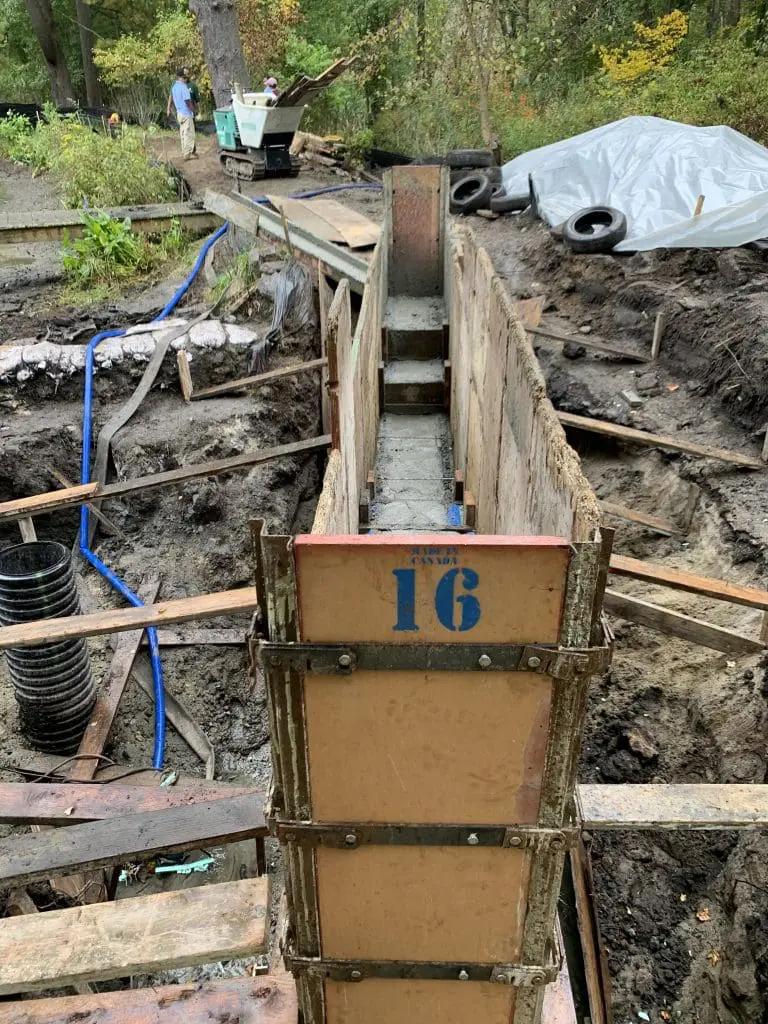
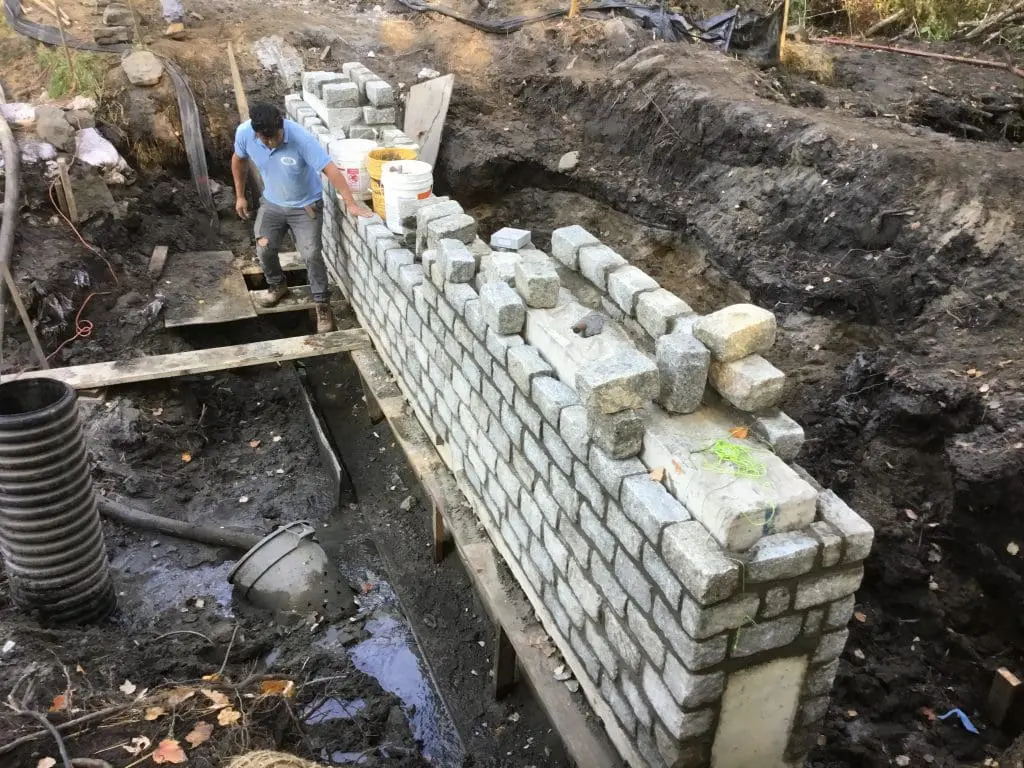
A wooden walking bridge constructed adjacent to the dam was extended 10′ longer than the original design plan, due to erosion of the banks over the years.
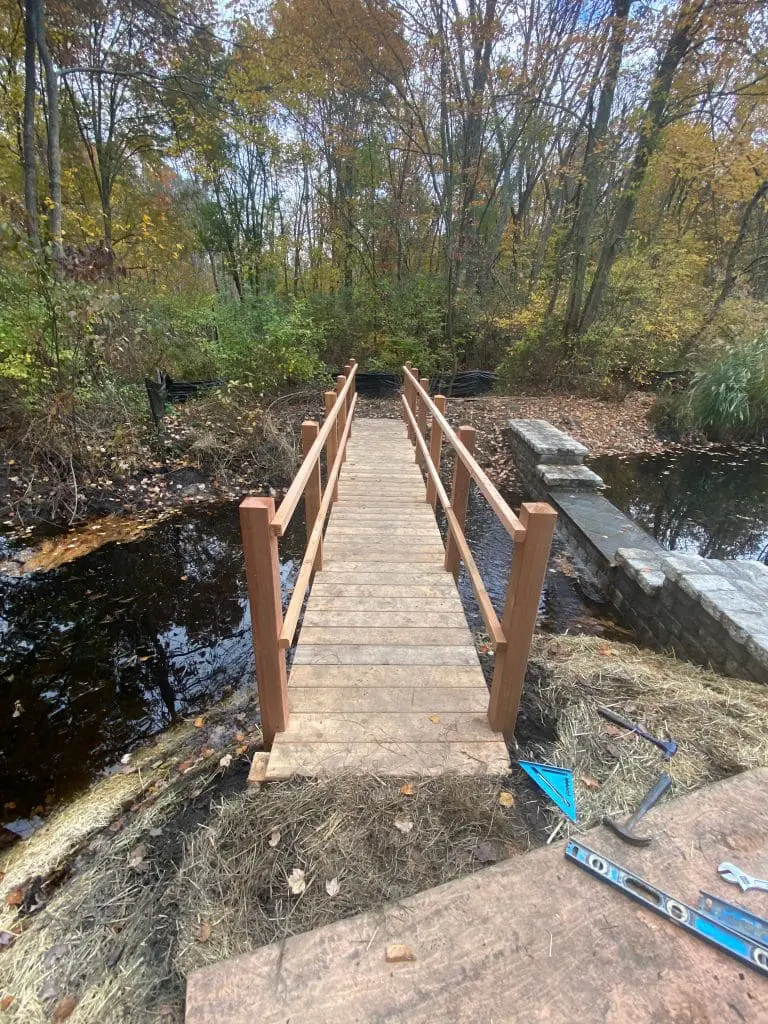

Now, with the means to maintain a consistent water level, the aquatic ecosystem has a chance to restore itself. We can’t wait to see how this diverse pond ecosystem thrives!

Stream corridor restoration and channel modeling was also necessary after dam construction, to allow for proper flow elevations and hydrology. The hydrology has changed significantly since we began the permitting process six years ago; the past three years received extraordinarily high rainfall (bordering on a temperate rain forest) and a resulting high water table.

GJL also seeded the former construction road with more native wildflower mix, which will again help to connect the wet meadow with the riparian border.

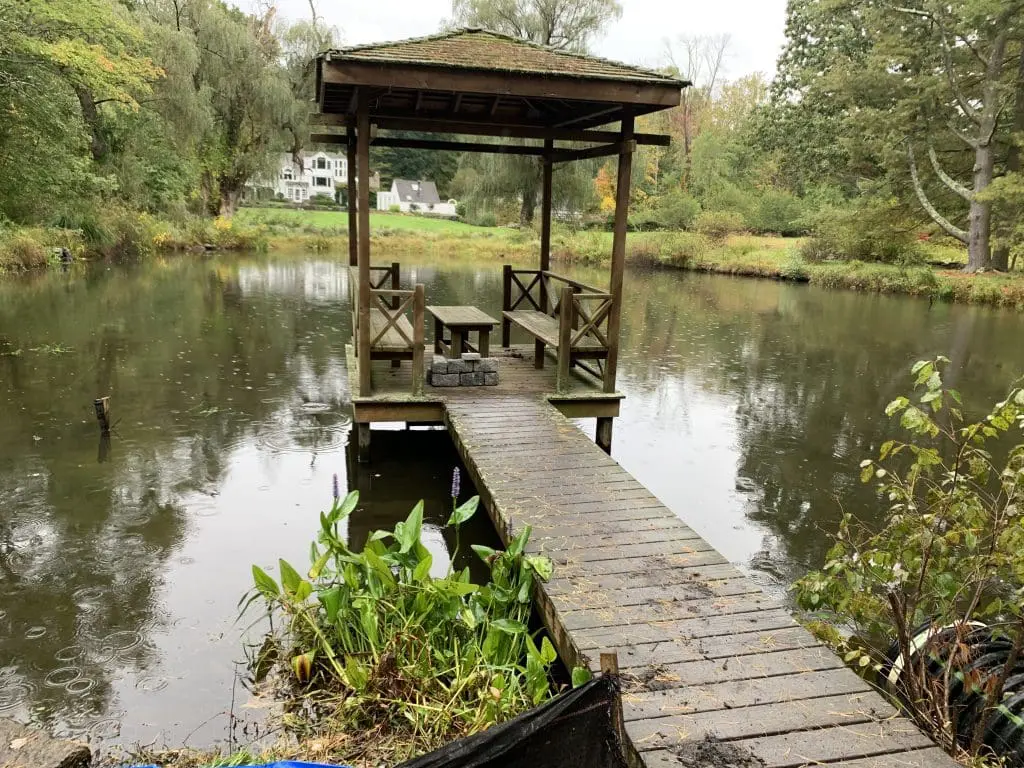
Contact us to discuss your wetland restoration or ecological landscape design project: 914-560-6570.
